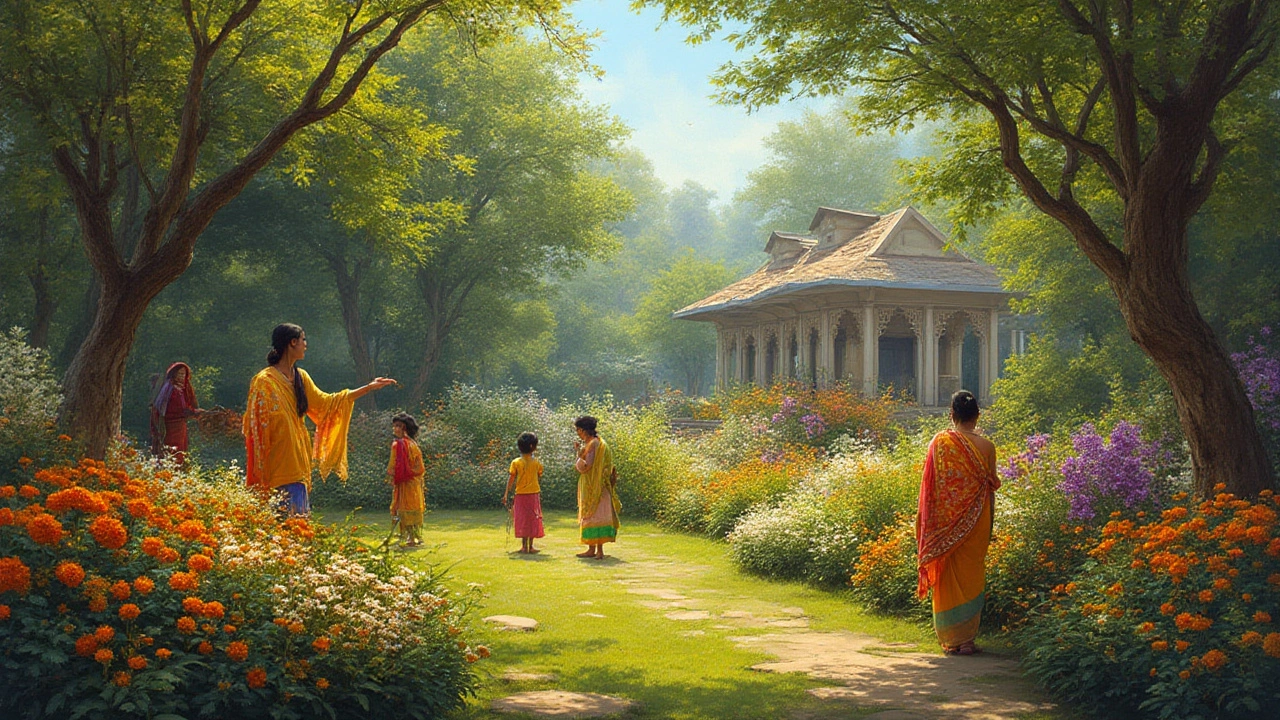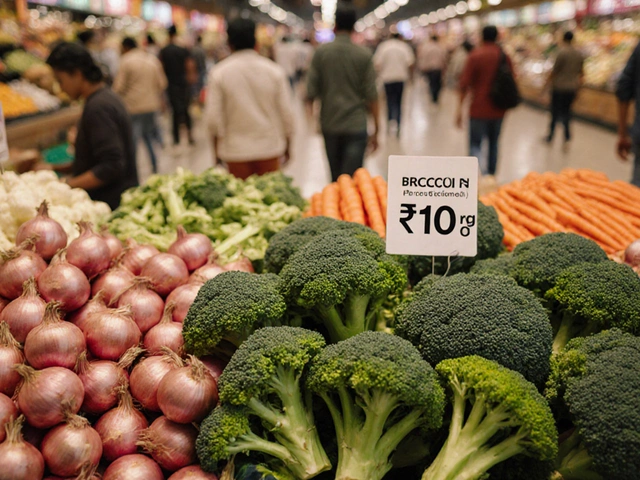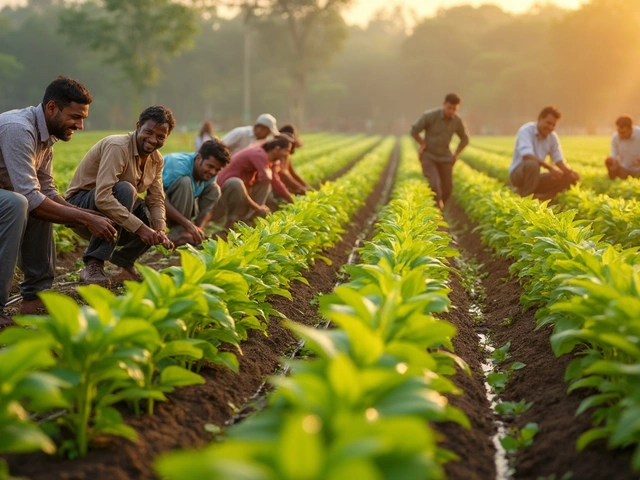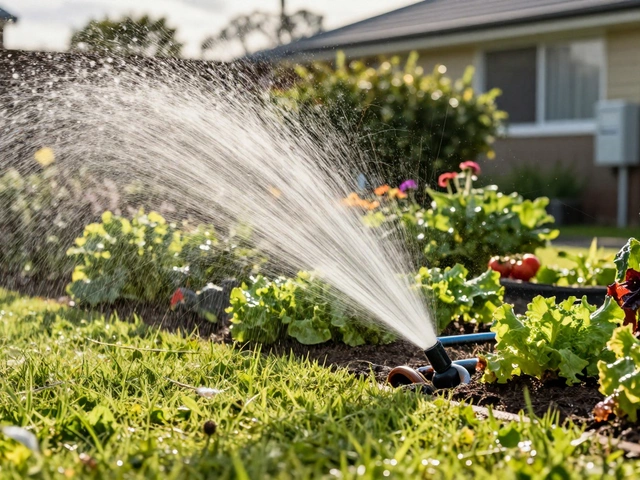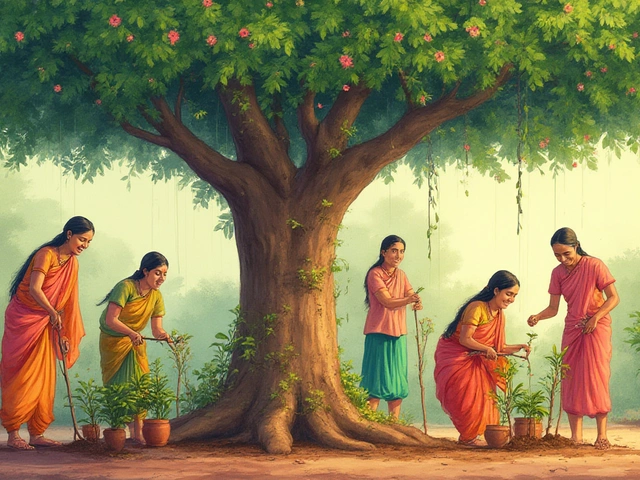Every Indian garden tells its story through bursts of color and changing scents, but there’s one question that trips up even experienced green thumbs: when do flowers actually bloom in India? Here’s a kicker: India doesn’t have one answer. From Himalayan valleys to sun-baked southern coasts, each stretch of land follows its own clock, almost like flowers are in on some inside joke about timing. If you’re planning a garden or even if you just want to catch the best floral spots while traveling, understanding India’s blooming months is like having the secret map to a treasure.
The Indian Climate: A Patchwork Quilt for Flowers
People usually think India is all scorching sun or endless monsoons, but the truth is a lot more interesting for anyone into gardening or just enjoying flowers. India’s climate can flip from snow-laden winters in the north to tropical sun in the south, and this difference shows up in the wild mix of flowers across regions.
Think about this: In January, while the North rolls up in warm shawls, the southern states like Kerala and Tamil Nadu are warm and lively. That means their gardens are already shaking off sleep and getting colorful. On the other hand, up north, winter temperatures keep most flowers in tight buds or underground bulbs, tucked away until spring. And then there’s the monsoon. Western Ghats, northern plains, plateaus—all these areas wait for showers before bursting into a kind of botanical firework.
If you’ve got kids like my Rohan, you notice the thrill as the seasons flip. Those first gulmohar petals in late spring or the champa flowers after a hard summer—those sightings are little cause for celebration at home, the way some folks cheer for migrating birds. Knowing these zones helps garden lovers decide what plants to grow and when to expect miracles in their backyard (or window box, no judgment!).
Monthly Guide: When Do Flowers Bloom in India?
Alright, let’s break this down month by month so you never miss out on that perfect Instagram snap, or you know exactly what to expect from your garden. Each month in India has its own floral personalities, thanks to this wild climate patchwork:
- January to February: Spring creeps up in South India. Jasmines, marigolds, calendulas, and sweet peas are the stars. Delhi and Northern Hill States are still too chilly, but pots of chrysanthemums and calendulas hang on.
- March to April: This is nature’s opening act nationwide, sparking the North and Central India into bloom. Roses, petunias, phlox, hibiscus, and sweet-smelling lilies dominate. Trees like gulmohar and amaltas toss their red and golden blossoms on city lanes.
- May to June: Now, the mercury spikes. Orchids, bougainvillea, and sun-drenched hibiscus take over. Hardy zinnias and portulacas laugh in the heat, making summer gardens stunners, especially in the west and south.
- July to September: The monsoon show arrives, especially for the Western Ghats and central states. Rain lilies, water hyacinths, tuberoses, and the swamp-loving lotus thrive. Gardens get that fresh-earth perfume, and wildflowers riot along highways.
- October to December: As the air cools, India’s heartland springs alive again. Marigolds, dahlias, chrysanthemums, and roses come back strong. This is wedding and festival season—notice how fresh garland supplies never seem to run dry? Nature’s on everyone’s side.
Of course, every garden is different. Roses in Bangalore start thickening their buds by November, while Delhi waits for the chilly air to clear up. Some places, like the Nilgiri hills or the higher reaches of Uttarakhand, pull off year-round blooming, if you know your plants.
Iconic Flowers and Their Seasons Across Indian Regions
Not all flowers are created equal—or timed the same across the country. If you’ve ever tried growing tulips in Hyderabad or sunflowers in the chill of Shimla, you know what I mean. To make things clearer, here’s how some iconic blooms show off in their favorite months and regions:
- Himalayan Bulbs (March-May): Crocuses, tulips, daffodils—a springtime symphony in Kashmir and Himachal as soon as the snow starts to melt. Local markets explode with color, and tourists chase the brief season.
- Gulmohar (April-June): Across peninsular cities, streets catch fire with gulmohar’s orange-red flowers. If you grew up in Mumbai, Pune, or Chennai, it’s impossible to miss how one tree can change the whole mood of a street.
- Lotus (June-September): The national flower hits its stride when monsoon fills lakes and ponds from the central plains to Bengal. Walk past any rural pond, and you’ll catch dragonflies buzzing through the pink-and-white labyrinth.
- Marigold (Year-round, major flush Oct-Feb): From wedding season through to temple rituals, marigolds keep the country bright. Cooler winters in the north and monsoon in the south both suit it well—no wonder it’s everyone’s favorite garland filler.
- Frangipani and Champa (March-October): Evenings in the south come scented with these flowers. In cities, people plant them near front gates, and the perfume is enough reason to pause on the walk home.
Some flowers only put on a show for a week or two, while others stick around. But if you check which months are peak season for these icons—and match it to your zone—you’ll have a garden that’s always giving you something to brag about (or, in my case, use as a “science lesson” for Rohan).
Gardeners’ Tips for Extended Blooms and Year-Round Color
Here’s the best part: With the wild range of climates and microclimates in India, you can actually time your garden so there’s never a dull moment. Here’s what’s worked at my place (with a lot of trial and error, and yes, some lost pots along the way):
- Stagger Your Planting: Tossing seeds or seedlings at different times—say three weeks apart for the same plant—guarantees that if one loses steam, another picks up. Works wonders with marigolds, petunias, and even zinnias.
- Mix Local and Adapted Plants: Going local always pays for the least maintenance. Native perennials like ixora, hibiscus, or the Indian coral tree will save you money and stress. But there’s no reason not to experiment—a sun-loving dahlia or imported cosmos can often surprise you, especially in balcony pots.
- Soil and Mulch: Don’t ignore soil. Rich compost (even from kitchen scraps) and a good layer of mulch keep roots cool in summer and cozy during the nippy months. My little guy Rohan actually loves helping with the compost bin—just expect the occasional worm rescue operation!
- Watch Watering: Indian summers dry everything out, while monsoons drown roots. Try a morning watering schedule, and give thirsty bloomers like sunflowers room so their leaves dry by midday. This lowers the risk of fungal issues that can wipe out an entire batch of pansies or petunias overnight.
- Snip and Deadhead: Flowers like roses and marigolds love the attention. If you regularly remove dried-up blooms, plants put out more flowers, aiming to finish the job evolution started.
Plants are living reminders that the less you fight your location, the happier your garden will be. A little observation on when your neighbor’s gulmohar lights up, or when herbs start to bolt in the heat, can save you a year’s worth of struggle.
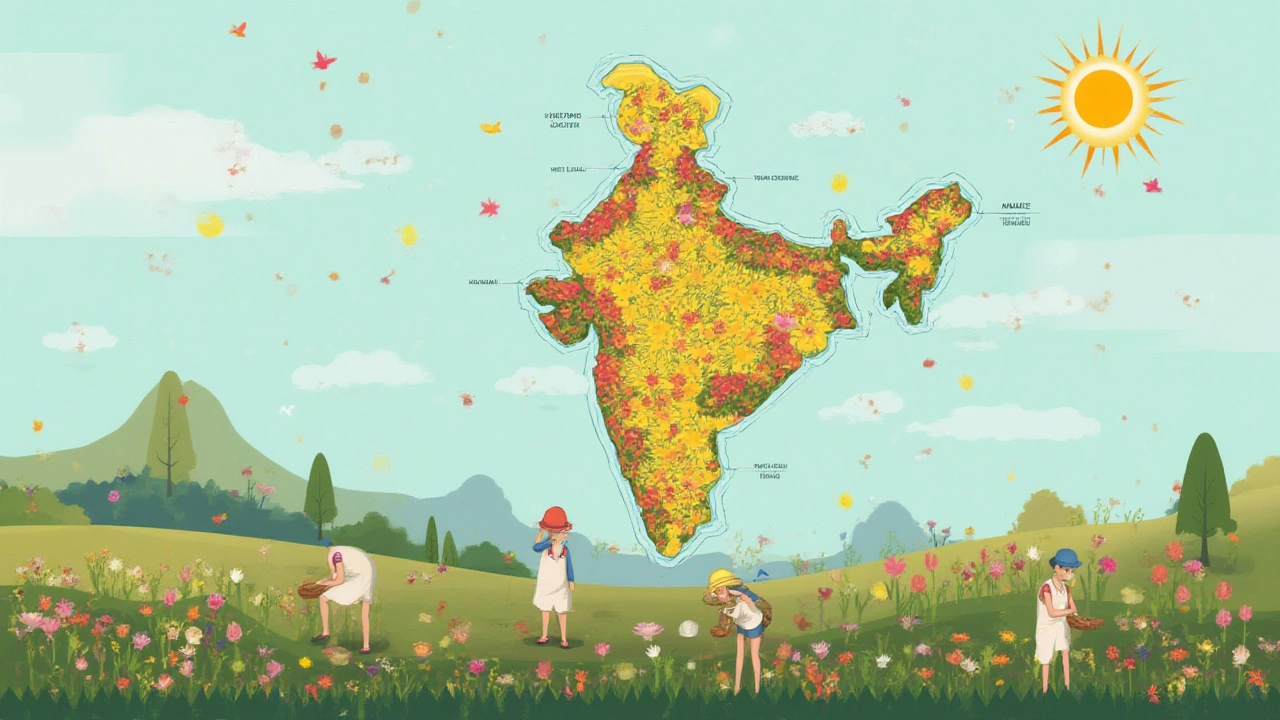
Flower Festivals and Where to See India’s Best Blooms
If you’re the type who prefers to gawk at pro-level gardens, plan to hit up some of India’s incredible flower festivals and parks. Every region has something that’s bigger—and often older—than anything you’ll squeeze onto your balcony.
- Mughal Gardens, Delhi (February-March): The President’s garden opens to the public just as dahlias, tulips, and roses peak. Not many spots in India have such perfect symmetry, and the photo ops are out of this world.
- Tulip Festival, Srinagar (April): For about two to three weeks, Kashmir’s Indira Gandhi Tulip Garden becomes a real-life rainbow. Timed right after the last frosts, it draws flower-lovers from everywhere.
- Lalbagh Flower Show, Bangalore (January & August): Bangalore’s garden city status shows off best during the bi-annual flower shows, especially with rare orchids and giant floral sculptures.
- Valley of Flowers (July-September): In peak monsoon, this Uttarakhand UNESCO site is carpeted with hundreds of wild blooms, attracting trekkers and botanists who geek out over Himalayan endemics.
- Ooty Rose Garden (March-June): Head here in late spring if you’re a rose junkie—over 20,000 varieties show off in neatly tended beds.
If you want to time a trip just for the best flower displays or need planting inspiration, these festivals and parks reveal what’s possible with a little patience…and probably an army of expert gardeners!
The trick to catching blooms at their peak is to follow regional weather patterns rather than flipping the calendar. Check local reports—if winter lasted long, expect blooms to show up a little late. Got a strange warm spell? Some plants may sprint ahead, while others sulk. It’s a reminder, too, that in India, the land calls the shots.
No matter what month it is, somewhere in India, something is about to bloom. Be ready—and let your calendar be colored by the flowers you plant or spots you visit, not the other way around.
